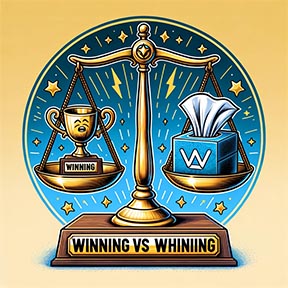
Success, as we’ve been taught, doesn’t come easy. There will be Adversity. But what separates the winners from the whiners? Is it talent, luck, or some magic formula? Or is it something deeper, something engrained in the core of their being?
Let’s tap into the wisdom of Coach Michael Burt, who often says, “Everybody needs a coach in life.” Burt’s philosophy emphasizes a “whole person theory,” aiming to tap into the body, mind, heart, and spirit of each player. But what does that have to do with our topic at hand? Well, the difference between winning and whining often boils down to your overall approach to life, encompassing all these facets.
Mindset: The Starting Line
Imagine this: The game is tied, seconds are ticking away, and you have the ball. At this moment, do you see an obstacle or an opportunity? Your mindset determines your actions.
As Burt articulates, “You can’t see the picture when you’re in the frame.” Sometimes you need an external perspective to guide you, to sharpen your mindset. This is where a coach comes into play, to help you see the game from angles you can’t perceive when you’re in the heat of the moment.
Ask Yourself: How can I adjust my mindset to be more aligned with that of a winner, and who can help guide me in that transformation?
Overcoming Adversity:
The Chicago Bulls vs. The Detroit Pistons
In the late ’80s and early ’90s, the NBA witnessed one of the most bitter rivalries: the Chicago Bulls versus the Detroit Pistons, also known as the “Bad Boys.” The Pistons were known for their physicality, often pushing the rules to the limits. The Chicago Bulls, led by Michael Jordan, initially couldn’t get past this obstacle. They were stuck, they were frustrated, and they were defeated. But did they whine about it? No. They evolved.
The Bulls took their failures as a challenge. They bulked up, they practiced harder, and Michael Jordan even worked on a more physical style of play. The result? They not only defeated the Pistons but went on to dominate the NBA.
Michael Jordan said, “Obstacles don’t have to stop you. If you run into a wall, don’t turn around and give up. Figure out how to climb it, go through it, or work around it.” This epitomizes the mindset of a winner.
Ask Yourself: What walls are you facing right now, and how can you overcome them instead of complaining?
Building Resilience in the Face of Adversity:
Body, Mind, Heart, and Spirit
This is where Coach Burt’s “whole person theory” becomes essential. To be resilient, to overcome, and to win, you need to be strong not just in body, but in mind, heart, and spirit.
- Body: Physical preparation and conditioning.
- Mind: Strategic and critical thinking.
- Heart: Passion, drive, and motivation.
- Spirit: Ethical grounding and a sense of purpose.
Michael Burt explains that the best competitors in the world have all these four components finely tuned. They aren’t just showing up on game day; they are preparing with a relentless focus on these four aspects.
Ask Yourself: Am I nurturing each of these areas in my life, or am I neglecting one over the others?
The Accountability Factor
Winners hold themselves accountable; whiners look for someone else to blame. If you’ve ever listened to a post-match interview of any great athlete, you’ll find them taking responsibility for their performance, good or bad.
“A good coach will make his players see what they can be rather than what they are,” Burt opines. Accountability starts with oneself but extends to the community around you—your team, your coach, your family, and your friends.
Ask Yourself: Who is holding me accountable, and more importantly, am I holding myself accountable? Am I taking Responsibility for my outcomes?
Final Word on Adversity?
The line between winning and whining is thinner than you think, but it’s a line that defines your character. It’s a line that speaks volumes about your preparation, your values, and ultimately, your success. So the next time you find yourself at a crossroads, caught between the urge to blame and the drive to overcome, remember: winners find a way; whiners find an excuse.
Ask Yourself: Which side of the line do you want to stand on?
Coach Wheeler, inspired by the philosophies of Coach Michael Burt, asks you to reflect, to challenge yourself, and to always strive for the winning side of life. Don’t let adversity get the better of you. Let it challenge you and reveal your best qualities. Because when you decide to be a winner, you’re not just affecting the score of the game; you’re defining your destiny.
Recommended Books for Further Reading on the topic of Adversity:
“Mindset: The New Psychology of Success” by Carol S. Dweck
A deep dive into the concept of “fixed” vs. “growth” mindsets, explaining why your outlook often determines your outcome.
“Grit: The Power of Passion and Perseverance” by Angela Duckworth
Learn why grit often predicts success more reliably than talent.
“Relentless: From Good to Great to Unstoppable” by Tim S. Grover
Written by Michael Jordan’s personal trainer, this book explores the mentality of top performers in any field.
“The Score Takes Care of Itself: My Philosophy of Leadership” by Bill Walsh
A look into the coaching philosophy of Bill Walsh, one of the most successful coaches in NFL history.
“You Win in the Locker Room First: The 7 C’s to Build a Winning Team in Business, Sports, and Life” by Jon Gordon and Mike Smith
The book explains how to build a successful team by focusing on culture and character.
“The Obstacle Is the Way: The Timeless Art of Turning Trials into Triumph” by Ryan Holiday
A modern take on Stoic philosophy that teaches how to turn obstacles into opportunities.
“Everybody Needs a Coach in Life: Isn’t It Time You Found Yours?” by Michael Burt
A comprehensive view into Coach Michael Burt’s philosophies on coaching and personal development.
“Coaching for Performance: GROWing Human Potential and Purpose” by John Whitmore
A foundational text for understanding performance coaching.
The Franchise: Building a Winner With the World Champion Detroit Pistons, Basketballs Bad Boys by Cameron Stauth
For those interested in the historic rivalry mentioned in the article.
“Leaders Eat Last: Why Some Teams Pull Together and Others Don’t” by Simon Sinek
This book explores how great leaders can create a circle of safety that promotes trust and meaningful work.



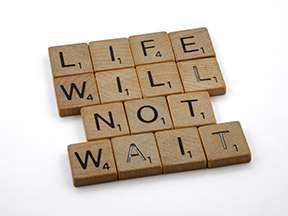

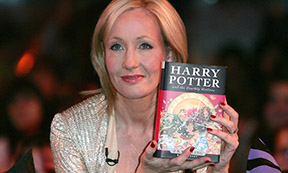

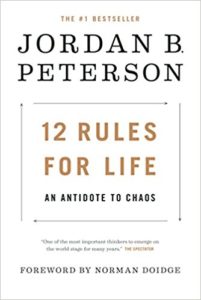
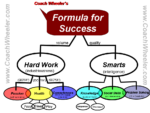
 This probably won’t sound earth shattering but it should make immediate sense when you think about it. “The
This probably won’t sound earth shattering but it should make immediate sense when you think about it. “The  The Formula for Success has 3 parameters under “Hard Work”. They are (1) Passion, (2) Health and (3) Consciences. Let’s look at each in more depth.
The Formula for Success has 3 parameters under “Hard Work”. They are (1) Passion, (2) Health and (3) Consciences. Let’s look at each in more depth.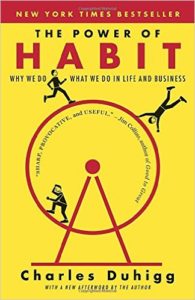
 The second major component of Success is “Smarts” or “general intelligence”. Coach Wheeler breaks this down into 3 parts, (1) Knowledge, (2) Social Skills and (3) Problem Solving. Going back to Jordan B. Peterson, he has said that the studies show intelligence, as measured by IQ, is incredibly difficult to improve. On the other hand, Knowledge can continually be accumulated and you can gather facts or ideas that you can use across a wide variety of situations. Coach Wheeler also added Social Skills to his model for success and we will discuss how to build and leverage them more below.
The second major component of Success is “Smarts” or “general intelligence”. Coach Wheeler breaks this down into 3 parts, (1) Knowledge, (2) Social Skills and (3) Problem Solving. Going back to Jordan B. Peterson, he has said that the studies show intelligence, as measured by IQ, is incredibly difficult to improve. On the other hand, Knowledge can continually be accumulated and you can gather facts or ideas that you can use across a wide variety of situations. Coach Wheeler also added Social Skills to his model for success and we will discuss how to build and leverage them more below.
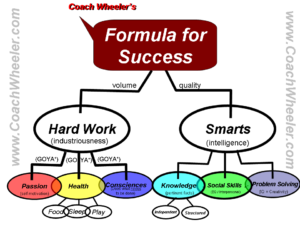
 Everyone has problems. If you are alive, you have problems. They might be big, life-changing problems like a diagnosis of cancer or they could be minor inconveniences like a fly buzzing in your ear. That’s not why problem solving tactics don’t work. Problem solving is easier than you think, but I am getting ahead of myself.
Everyone has problems. If you are alive, you have problems. They might be big, life-changing problems like a diagnosis of cancer or they could be minor inconveniences like a fly buzzing in your ear. That’s not why problem solving tactics don’t work. Problem solving is easier than you think, but I am getting ahead of myself. Summer is when you can make huge improvements as a basketball player… especially if you grind. GRINDing is all about
Summer is when you can make huge improvements as a basketball player… especially if you grind. GRINDing is all about  If you have not seen my previous Mental Toughness post:
If you have not seen my previous Mental Toughness post: